What is Sustainable Aviation Fuel (SAF)?
Turning Aviation into a Clean Means of Transportation!
(Provisional translation)
(English ver.) 2025-02-28
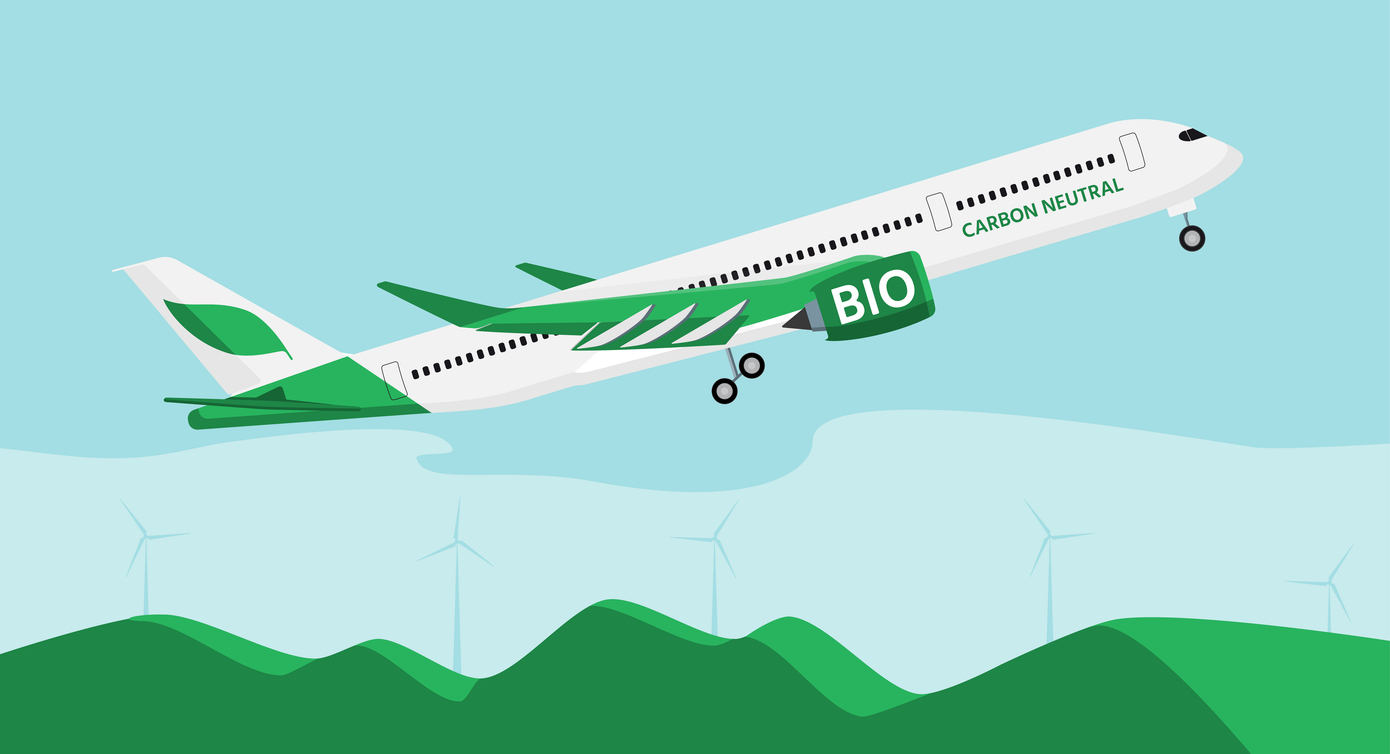
Achieving a carbon neutral society will require efforts to reduce CO2 emissions in various fields. One of the challenges we face is how to reduce aviation CO2 emissions. A promising solution will be to replace jet fuel with SAF, which burns cleaner in aircraft engines. This article gives a broad outline of SAF along with the present state of its feedstock and production methods.
Sustainable aviation fuel (SAF): The key to reducing aviation CO2 emissions
Sustainable aviation fuel (SAF) is produced mainly from waste oil and fats, microalgae, woodchips, sugarcane, and wastepaper. SAF is thought to be more effective in reducing CO2 emissions than conventional petroleum-based jet fuel. For instance, bio-jet fuel made from microalgae and woodchips, while emitting CO2 during combustion, does not increase overall CO2 in the atmosphere because its feedstock biomass is reproduced by absorbing CO2.
For SAF to be used in aircraft engines, it needs to comply with the international standards issued by ASTM International, one of the world’s largest standardization institutions. According to the standards, SAF is required to be mixed with fossil jet fuel, with the allowable maximum mixing ratio being 50%.
Difficulties in reducing aviation CO2 emissions
How much CO2 is emitted during air travel? According to a numerical analysis, CO2 emissions from aircraft are less than those from private cars, but are greater than those from public transportation, such as railways.
You may be aware that travelling by air is branded as “flight shame” in Europe and elsewhere due to the size of aviation CO2 emissions. On the other hand, if you look at the base unit of CO2 emissions (CO2 emissions per person/kilometer), avoiding air travel may not always be a sensible option. Japan, surrounded by the sea, depends heavily on air travel for going to and coming from foreign countries. Furthermore, in recent years, Japan has been making efforts to attract foreign tourists.
What about ways to lower aviation CO2 emissions, such as electrification? Kerosine-based conventional jet fuel that is used to power aircraft has high energy density per unit weight. In other words, jet fuel can generate a lot more energy than lithium-ion batteries or liquefied hydrogen on the same weight basis. Therefore, at this point in time, no other fuels are ready to replace conventional jet fuel.
That said, it is essential to reduce aviation CO2 emissions toward achieving net zero by 2050. Ambitious goals have been announced toward reducing aircraft engine emissions by some international organizations, including the International Civil Aviation Organization (ICAO), a United Nations Specialized Agency. The ICAO aims to cap the CO2 emissions of international aviation from 2021 onward at the level seen in 2019 (base emissions). The 41st ICAO Assembly, held in October 2022, increased its ambition by agreeing to stabilize the emissions of international aviation in 2024 onward at 85% of the 2019 level.
Timeframe for the reduction of aviation CO2 emissions
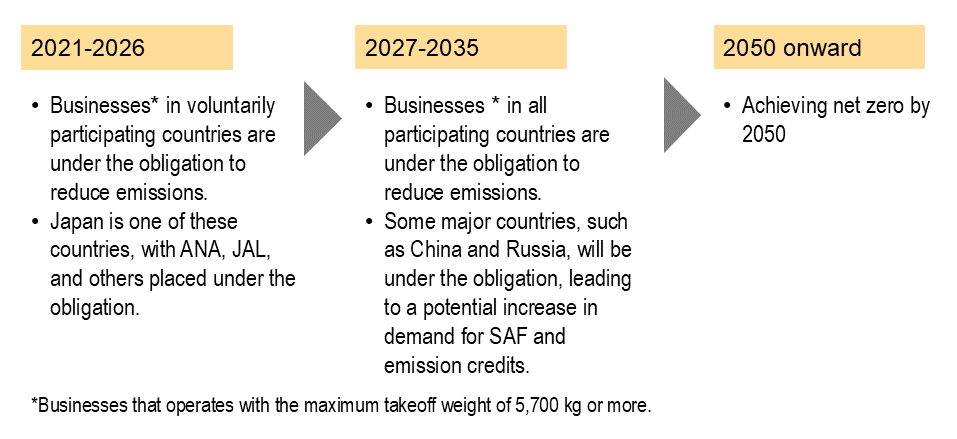
SAF is thought to be a means to achieve these goals. The following graph, based on the ICAO LTAG Report, shows a scenario predicting future CO2 emissions from international aviation with a goal for emission reductions. In this scenario, CO2 emissions in 2050 would be reduced by 55% thanks to SAF, which is a fuel with great promise.
CO2 emissions from international aviation and a long-term goal for emission reductions
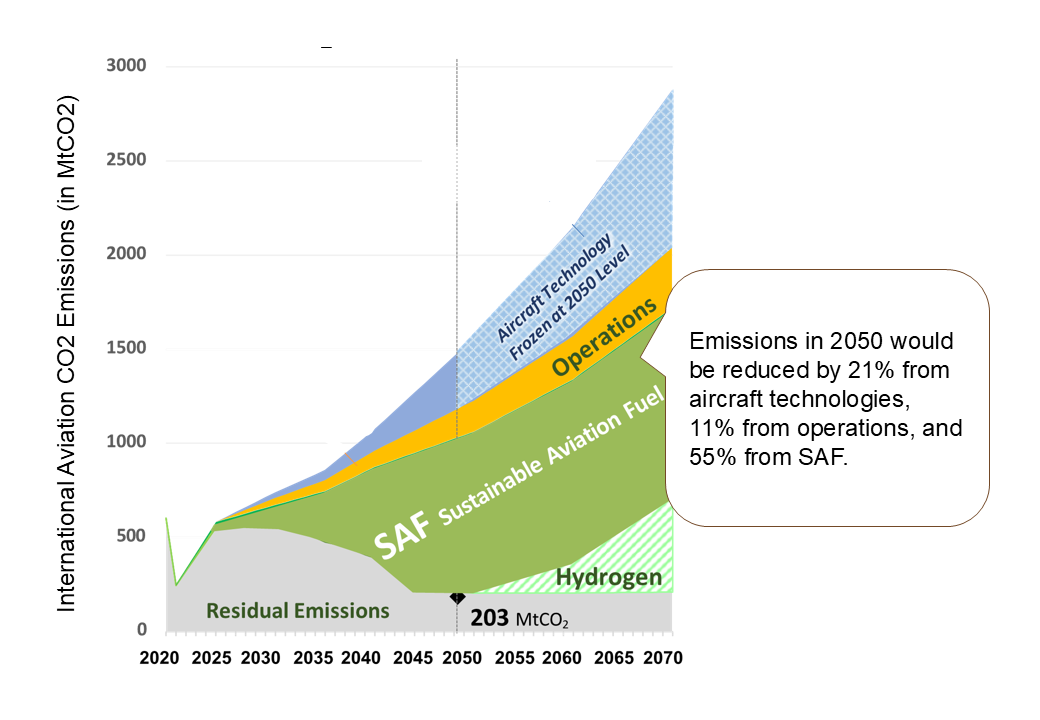
(Source) Paraphrased scenario from the ICAO LTAG Report (IS3: Aspirational Scenario by the ICAO)
Prospects for SAF feedstock and production technology
The global supply of SAF was 300,000 kiloliters as of 2022, accounting for only 0.1% of the world’s aviation fuel supplies.
A technology called HEFA (hydro-processed esters and fatty acids) has been established for producing SAF from waste oil and fats as feedstock. However, the prices of waste oil and fats are soaring due to limited supply and increasing demand globally.
Among a number of SAF sources (feedstock), bioethanol produced in the USA and Brazil seems to have large theoretical quantities (reserves). Going forward, a technology called “alcohol to jet” is expected to be established to utilize this feedstock. However, bioethanol is produced from edible sources, such as sugarcane and corn, the use of which is restricted by European countries. Therefore, the diversification of feedstock is required to develop nonedible sources, such as pongamia pinnata, a species in the pea family.
Typical feedstock and technologies to produce SAF
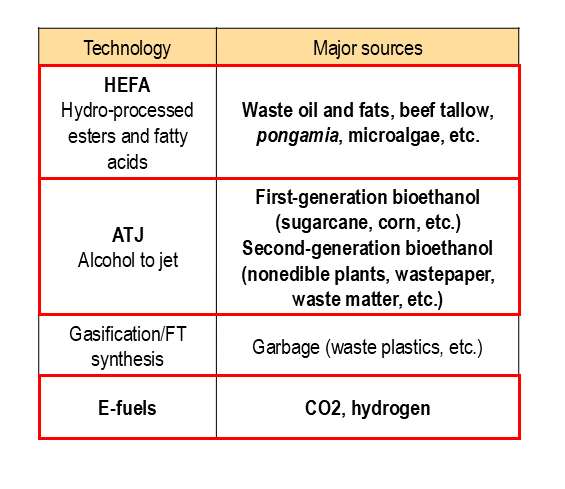
R&D is underway to establish technology for producing e-SAF. It is made from e-fuels that are made through the synthesis of CO2 and hydrogen. A market outlook predicts that e-SAF will ramp up to 2050 to account for 50% of the total SAF feedstock.
Outlook for global SAF capacity by production technology
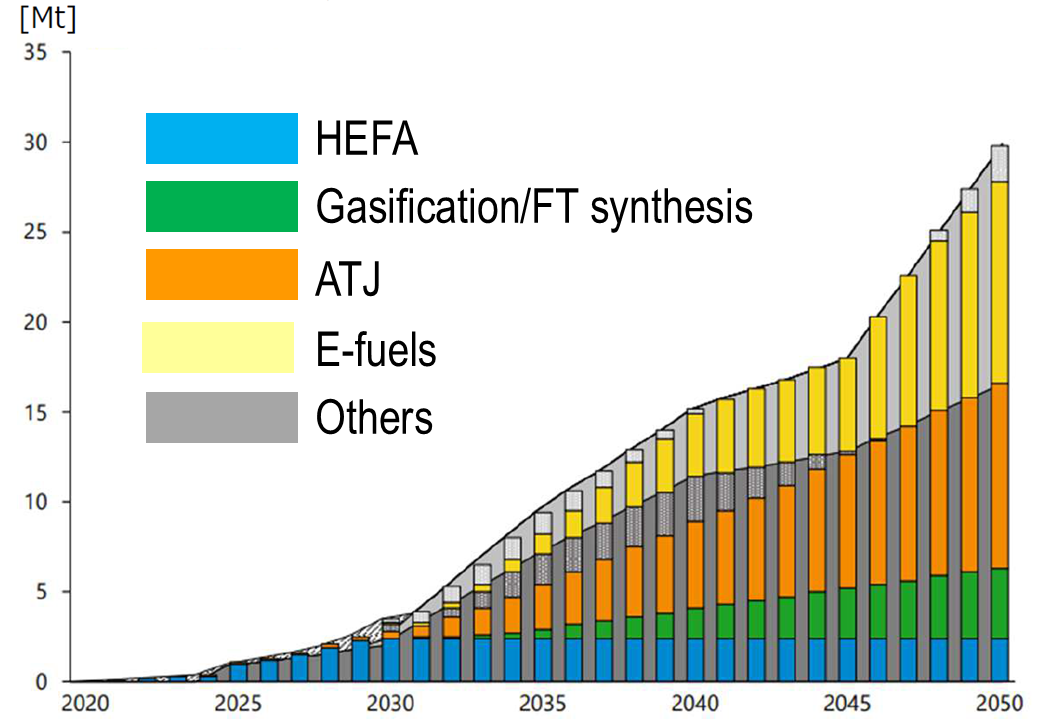
(Source) A Market Outlook on SAF published by Sky NRG
To expand the introduction of SAF, further efforts are required to secure stable feedstock availability. Technological developments in various fields are expected to facilitate the utilization of SAF to make air travel greener.
Divisions in Charge
About this article
Fuel Supply Infrastructure Policy Division, Natural Resources and Fuel Department, ANRE
About the Special Contents
Research and Public Relations Office, Commissioner’s Secretariat, ANRE
![]() The original Japanese text of this article; Click here
The original Japanese text of this article; Click here